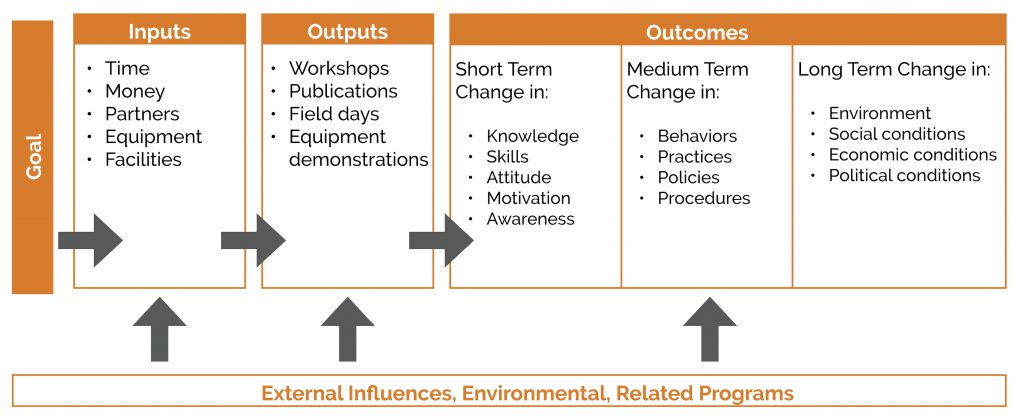Many nonprofits face the challenge of turning their “big picture” ideas into successful and effective programs. For example, developing and implementing a statewide child welfare data information system to improve the lives of children is no small task. A large-scale project requires a plan of action to be successful and effective. Lasting change is hard to achieve without a plan.
“What are we trying to accomplish/change, and who is our primary target audience? What do we need to accomplish our goal, and how do we make sure the program is impactful?” Suppose you’ve asked these questions and want to create a program that promotes collective impact and produces lasting transformative results. In that case, it’s time to turn that “big picture” idea into a reality with a logic model.
What is a logic model?
A logic model illustrates a tangible theory of change. It’s a program planning tool used to promote collective impact. It provides a point of reference with a shared agenda for users. In other words, a logic model visualizes a program’s resources, activities, inputs, and outcomes. It shows all the different ways a program can lead to change, providing the “big picture.”
Logic models are used during a program’s planning, implementation, and evaluation because they show the relationship between its activities, resources, outcomes, outputs, impact, and intended efforts. They also help keep track of program activities, achievements, and issues that may arise.
What’s included in a logic model?
With a goal in hand, parts of a logic model include inputs, outputs, outcomes, and external influences.

- Inputs on a logic model are the resources, investments, and contributions (usually financial and staff) that go into the program.
- Outputs are activities, products, events, and services that will reach the target audience or program participants.
- Outcomes are changes/results because of the program. Outcomes can be set for short-term, mid-, and long-term goals, focusing on what the program is trying to achieve.
- External influences are essential factors that may help or hinder a program’s success and should be identified. They include the program setting, other programs operating in the same area, and influencers (local, state, and/or national).
What are the steps to a logic model?
There are several steps to turning that “big picture” idea into a reality and creating a successful logic model.
- Step 1: Figure Out the Problem: What’s the goal you want the program to accomplish?
- Step 2: Determine Key Inputs and Outputs: What type of resources (financial and staff), investments, and contributions (donations, grants, etc.) will the program need? What kind of activities, events, services, and/or products do we want to offer to program participants/target audience?
- Step 3: Identify Outcomes: What changes/results do we want to see because of the program?
- Step 4: Create a Logic Model Outline: What steps are needed to reach your goal? Take a pen to paper and start writing it down.
- Step 5: Research and Identify External Factors and Indicators. What are the influential external factors and program indicators that can be identified ahead of time?
Why use a logic model?
Logic models are an important tool to use in program and strategic planning. A good logic model is an explicit statement of activities that bring results and change to a community. There are many benefits to using logic models including:
- Provides the “big picture” and a visualization of a program’s resources, activities, inputs, and outputs
- Helps increase staff buy-in by helping staff gain an understanding of how a program works and their role in its success
- Helps external stakeholders, constituents, and donors understand a program and what it takes to run it in a compelling and concise way
- Helps define a common understanding of collaboration goals and activities and promotes collective impact.
- Shows all the different ways that can lead to change, related or unrelated to the program
- Describes the ‘how’ and ‘why’ change can happen through a program
- Helps identify areas where additional support is needed
Are you ready to turn your ideas and goals into a reality? It may be time to utilize a logic model. Download our free logic models template here. For additional resources, check out the following blogs:
- 3 Tips to Plan Your New Program Before You Launch It
- Using Performance Indicators to Drive Impact
- 4 Steps to Complete a Program Evaluation
- At TCG, we love supporting organizations in the “dream” phase of planning and implementation once you establish your strategies. Learn about our capacity-building solutions here, including strategic planning, program development, and project management.

